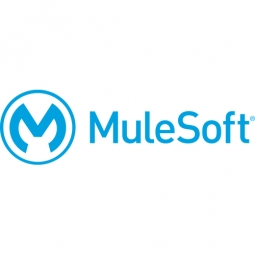Technology Category
- Application Infrastructure & Middleware - Data Exchange & Integration
- Platform as a Service (PaaS) - Application Development Platforms
Applicable Industries
- Retail
- Telecommunications
Applicable Functions
- Sales & Marketing
- Warehouse & Inventory Management
Use Cases
- Inventory Management
- Picking, Sorting & Positioning
Services
- Cloud Planning, Design & Implementation Services
- System Integration
About The Customer
Lotus’s is a well-known retail brand that operates around 2,500 outlets in Thailand and Malaysia. These outlets range from small and medium-sized supermarkets to large superstores known as hypermarkets. The company was founded in 1994 by the Charoen Pokphand (CP) Group and was held by another entity for twenty-two years before CP reacquired it in late 2020. Lotus’s has set ambitious goals to double its sales in two years by improving customer loyalty and adopting an omnichannel strategy.
The Challenge
Lotus’s, a popular retail brand with over 2,500 outlets in Thailand and Malaysia, aimed to double its sales in two years by improving customer loyalty and adopting an omnichannel strategy. However, the company's rapid growth led to the accumulation of multiple disparate systems and data sources across new acquisitions, partners, and supply chain operators. This made it difficult for Lotus’s to access the necessary data to gain visibility into its business. The existing IT infrastructure and point-to-point custom code integration were labor-intensive and costly to connect existing systems, add new systems, and access data. Lotus’s needed a more flexible systems integration solution to connect front and back-end systems at an accelerated pace to support its sales goals and business growth.
The Solution
To address these challenges, Lotus’s chose Salesforce Customer 360, deploying Marketing Cloud, Service Cloud, and MuleSoft Anypoint Platform. Anypoint Platform allowed Lotus’s to create the necessary data flow through API-led integration of the Salesforce clouds and legacy systems, such as billing and warehouse systems, across its enterprise, partners, and third-party platforms. The integrated SaaS and legacy systems enabled the company to launch a new ecommerce platform and combine its ecommerce and loyalty platforms for a new customer mobile app. Lotus’s extended its integration to partnering third-party systems, such as Lazada, Shopee, HappyFresh, and foodpanda, to cater to their customers’ preferred online platforms. This digital transformation allowed Lotus’s to access reliable, near-real-time information about what items are in stock and at which location, improving availability and delivery performance.
Operational Impact
Quantitative Benefit

Case Study missing?
Start adding your own!
Register with your work email and create a new case study profile for your business.
Related Case Studies.

Case Study
Improving Production Line Efficiency with Ethernet Micro RTU Controller
Moxa was asked to provide a connectivity solution for one of the world's leading cosmetics companies. This multinational corporation, with retail presence in 130 countries, 23 global braches, and over 66,000 employees, sought to improve the efficiency of their production process by migrating from manual monitoring to an automatic productivity monitoring system. The production line was being monitored by ABB Real-TPI, a factory information system that offers data collection and analysis to improve plant efficiency. Due to software limitations, the customer needed an OPC server and a corresponding I/O solution to collect data from additional sensor devices for the Real-TPI system. The goal is to enable the factory information system to more thoroughly collect data from every corner of the production line. This will improve its ability to measure Overall Equipment Effectiveness (OEE) and translate into increased production efficiencies. System Requirements • Instant status updates while still consuming minimal bandwidth to relieve strain on limited factory networks • Interoperable with ABB Real-TPI • Small form factor appropriate for deployment where space is scarce • Remote software management and configuration to simplify operations

Case Study
Digital Retail Security Solutions
Sennco wanted to help its retail customers increase sales and profits by developing an innovative alarm system as opposed to conventional connected alarms that are permanently tethered to display products. These traditional security systems were cumbersome and intrusive to the customer shopping experience. Additionally, they provided no useful data or analytics.

Case Study
How Sirqul’s IoT Platform is Crafting Carrefour’s New In-Store Experiences
Carrefour Taiwan’s goal is to be completely digital by end of 2018. Out-dated manual methods for analysis and assumptions limited Carrefour’s ability to change the customer experience and were void of real-time decision-making capabilities. Rather than relying solely on sales data, assumptions, and disparate systems, Carrefour Taiwan’s CEO led an initiative to find a connected IoT solution that could give the team the ability to make real-time changes and more informed decisions. Prior to implementing, Carrefour struggled to address their conversion rates and did not have the proper insights into the customer decision-making process nor how to make an immediate impact without losing customer confidence.

Case Study
Vodafone Hosted On AWS
Vodafone found that traffic for the applications peak during the four-month period when the international cricket season is at its height in Australia. During the 2011/2012 cricket season, 700,000 consumers downloaded the Cricket Live Australia application. Vodafone needed to be able to meet customer demand, but didn’t want to invest in additional resources that would be underutilized during cricket’s off-season.









